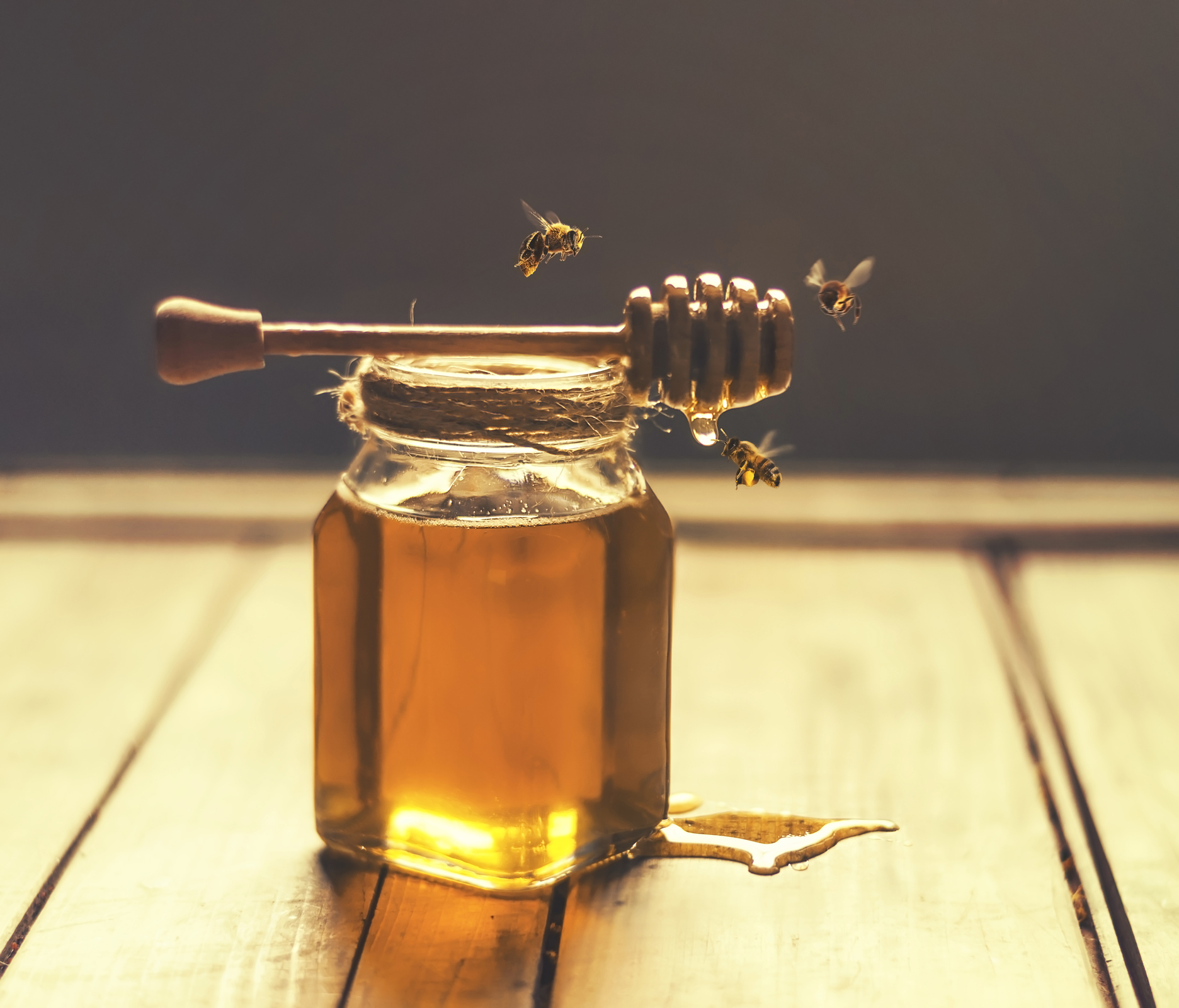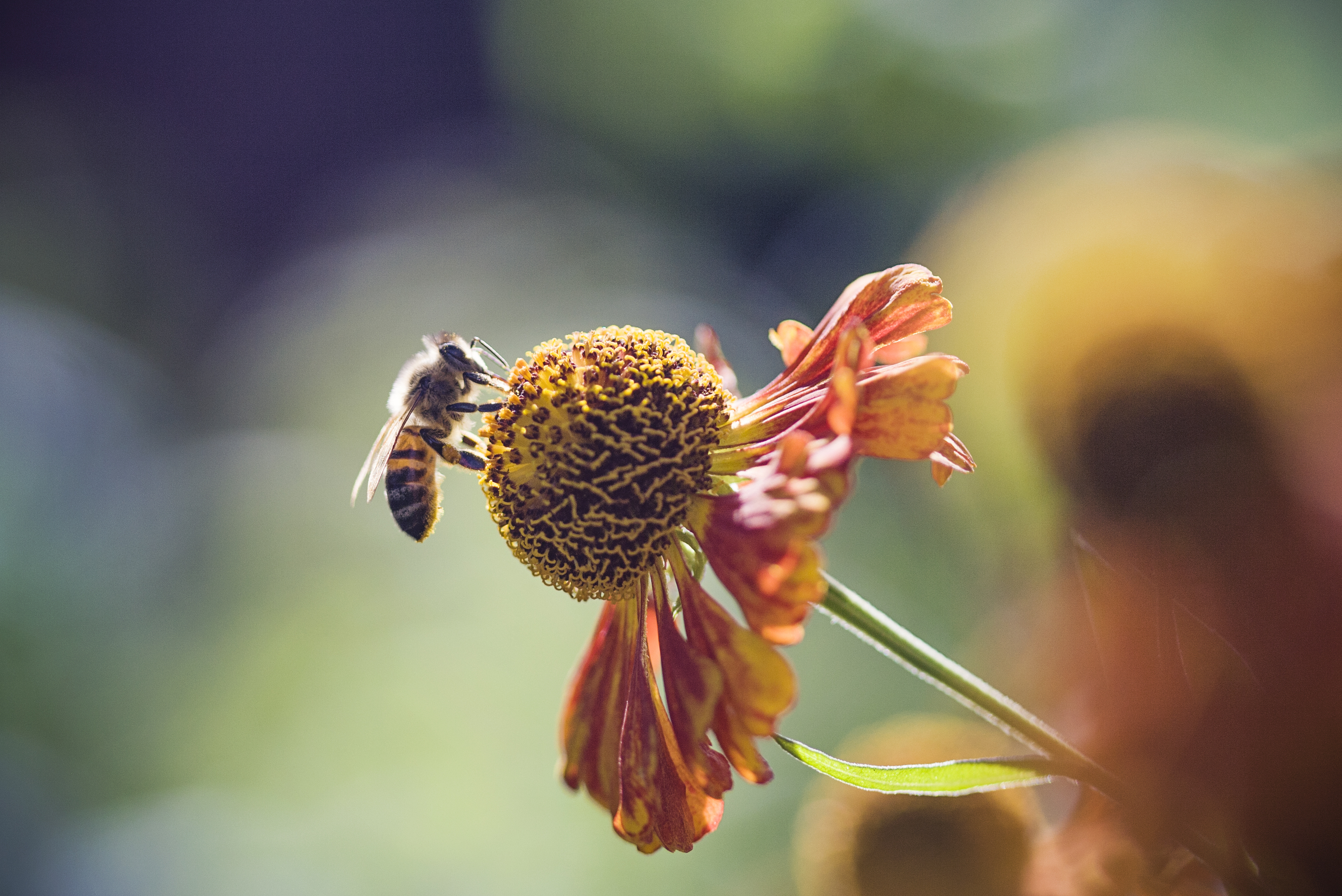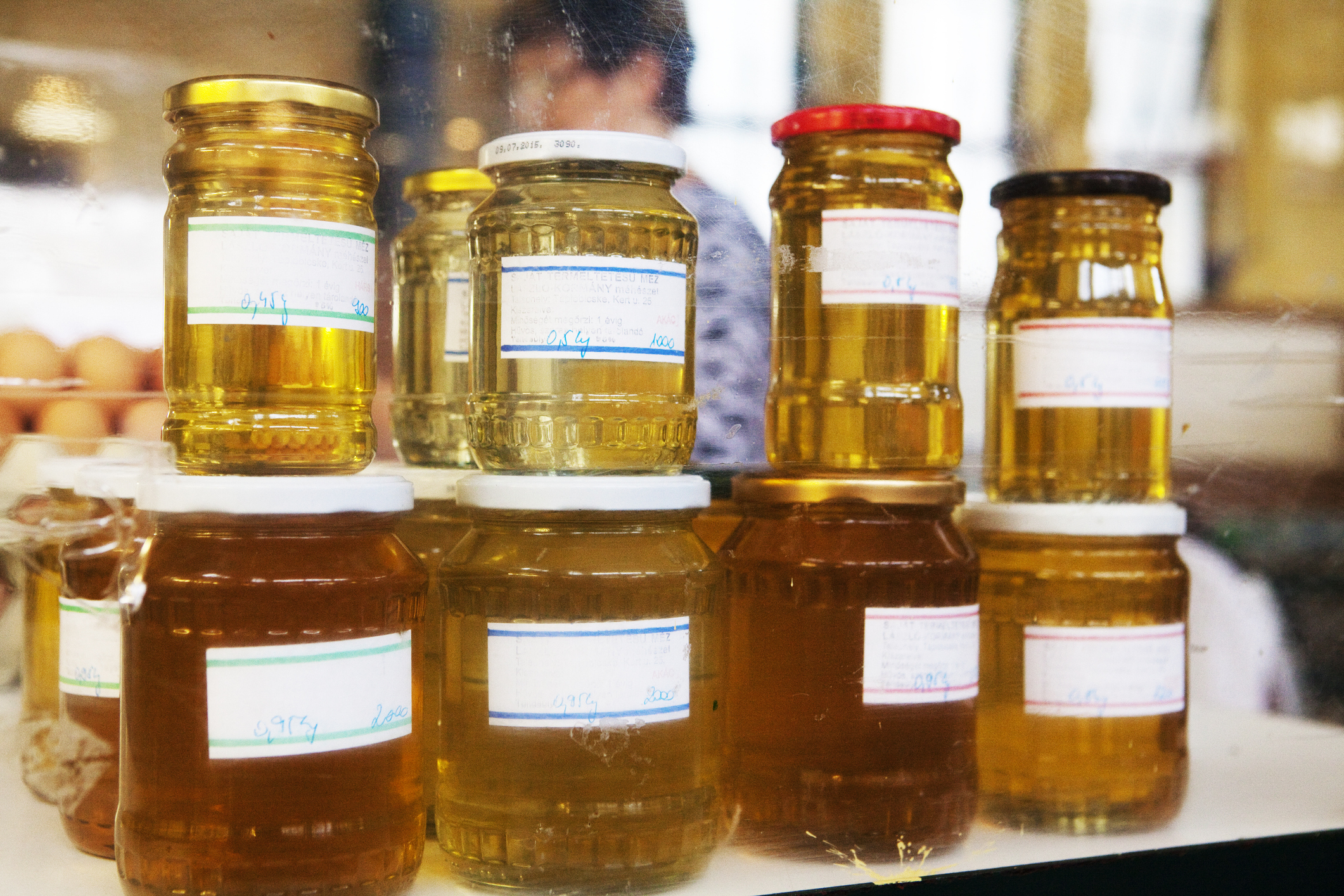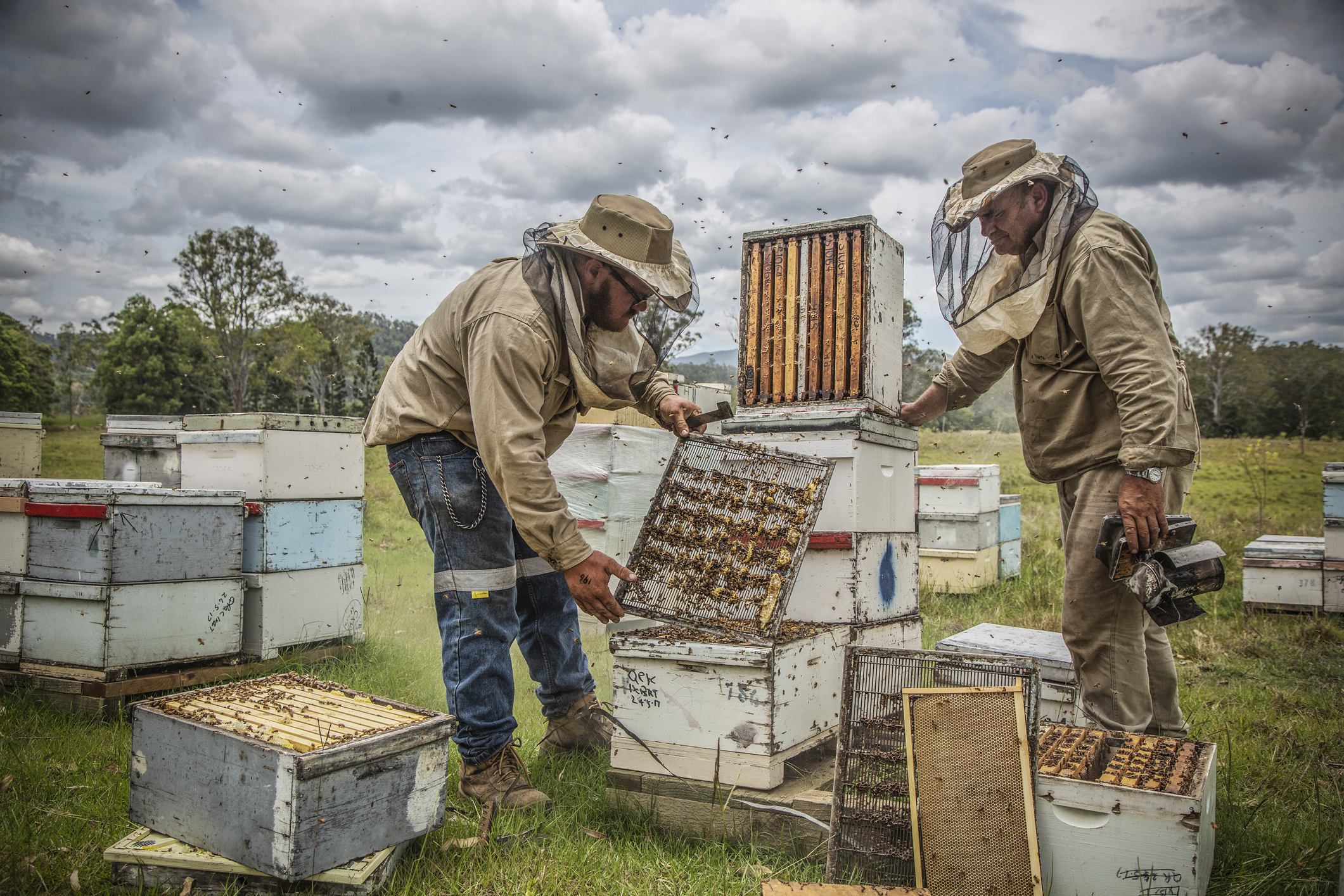The Healing Powers of Honey
News Based on facts, either observed and verified directly by the reporter, or reported and verified from knowledgeable sources.
For centuries honey has been used to heal wounds and treat ailments. Were the ancient Egyptians onto something, or is it all folklore? Local experts discuss the science behind this sweet treat.

Good morning! Today is Tuesday, May 31, and you are reading today’s section of Examiner+, a digital newsmagazine serving Westchester, Putnam, and the surrounding Hudson Valley.

As the weather warms and the bees begin buzzing, we turn our thoughts to one of nature’s most enjoyable sweeteners: honey. This sticky compound has been delighting and restoring us for centuries, from the ancient Egyptians to Winnie the Pooh. While we have all heard about honey’s abilities to cure illness and heal injuries, how much of these claims are founded in science, and how much depends on the feel-good benefits of mind-over-matter? Local experts say honey does, in fact, have some scientifically proven benefits, but be careful with your source. Not all kinds of honey are created equally. Maybe Pooh had the right idea — scoop it from the local hive!
What’s the Buzz About?
Science has proven honey does have restorative properties for burns, cuts, and sore throats.
“Honey has demonstrated anti-inflammatory, anti-bacterial, and anti-viral effects due to its antioxidants—namely, polyphenols,” says Abby Egginton, MD, of Balanced Natural Medicine, which has offices in Connecticut, Massachusetts, and New York, including Pleasantville. “Honey can speed wound healing by increasing the activity of monocytes and macrophages. The low pH of honey along with its viscosity also contributes to its antibacterial properties. Research supports the use of honey in healing wounds, burns, pressure wounds, radiation-induced mucositis [an injury common in cancer patients], and some rashes such as atopic dermatitis.”
The reason for honey’s naturally high acidity is because of how it is made. As the bee gathers nectar from the flowers the bee actually stores that nectar inside a pouch in its body as it brings it back to the hive, according to DJ Havercamp of Bedford Bee Honeybee Service, a service that fosters local beekeeping in Westchester and Fairfield counties. While the bee is traveling, she is actually adding an enzyme to the nectar and concentrating down the sugar into a tight packet. When the foraging bee gets back to the hive, she regurgitates that drop of nectar into the hive, which now has less water in it. Then a house bee will suck more water out of that droplet. “Then trophallaxis occurs,” says Andy Hatt, a beekeeper for Speedy Bee Apiaries who teaches beekeeping classes at Pound Ridge Organics in Pound Ridge. “The receiving bee sucks it up and she will blow bubbles with it for a couple of minutes. The process exposes the nectar to air and begins the evaporation process.” An opening at the top of the hive and some bees fanning the nectar work to thermoregulate the hive and evaporate any additional water. Bees have the ability to sense when the water level is low enough that the nectar has become honey. “They keep doing that until it’s about 13% water and about 87% sugar,” says Hatt. “When it reaches that consistency, they put a wax cap over it.”
That naturally dry, highly acidic droplet that has been infused with glucose oxidase and hydrogen peroxide from the bees’ pouch, now has antimicrobial, antiviral, and antibacterial properties.
That said, the most effective way to treat a sore throat would be to take a spoonful of honey. Putting it in tea may be soothing but less effective because you are essentially diluting its effect. “To amplify the antimicrobial property of honey on a sore throat, dip that spoonful of honey in cinnamon,” says Havercamp. “That will dramatically ramp up the effect on a sore throat because cinnamon is also antimicrobial and the two have a synergistic quality.”
To treat an injury, spread a little honey right on the cut or burn. “For radiation-induced mucositis, a teaspoon of honey is swallowed,” says Egginton. “The honey should be a local, unprocessed form.”

Nothing to Sneeze At
Many people believe honey has the ability to reduce one’s seasonal allergies when consumed in small amounts throughout the year. The science behind this is that since bees collect pollen from local trees and flowers, the tiny traces of pollen in honey help you build up immunity to those pollen sources. However, Karen Sabath, a beekeeping hobbyist with six hives in Westchester, says be mindful of your honey source. Most local honey has been sourced from wildflowers in the region. A bee can travel up to five or six miles for food. Often the bees pollinating trees are not the bees local beekeepers are collecting honey from. If your allergen is local trees, honey might not solve your problem, but perhaps it will if your allergy is goldenrod. Also, using honey that isn’t made locally will not have pollen from local sources in it. Single-source honeys like clover honey or orange blossom honey are typically not harvested in Westchester. Single-source honey has to be sourced from large fields or groves where only one flower is found. Scientific studies have garnered mixed results, says Egginton, “but given the safety profile, it may be worth trying for those who suffer from allergy symptoms.”
“My nephew believes when he takes honey in the spring, his allergies aren’t that bad,” adds Sabath. “I told him it’s not scientifically proven, but he doesn’t care. We both agreed that’s fine! Have as much honey as you want if it makes you feel better.”
Dr. Egginton recommends one teaspoon twice a day, starting at least one month before your seasonal allergies begin.
Better Than Sugar?
“It really depends on what you’re talking about,” says Dr. Egginton. For those who are diabetic, honey is not a safe alternative. Both sugar and honey increase blood sugar and should be avoided or consumption monitored. However, honey does have added nutritional benefits over table sugar, adds Egginton, including fatty acids, proteins, enzymes, potassium, calcium, iron, manganese, phosphorus, ascorbic acid, thiamin, riboflavin, and nicotinic acid (vitamin B3). These added vitamins and minerals make honey a better alternative to other sweeteners.

Not All Honey is Alike
Where it is from and how it is processed makes all the difference, say experts. Local beekeepers typically don’t heat or ultra-filter their honey but commercial beekeepers providing honey to grocery stores often do. This can decrease the nutritional benefits of your honey. Some commercial beekeepers are lax about the application of pesticides as well. If bees are pollinating flowers with pesticides, they bring those toxins back to the hive, explains Hatt. Some companies water their honey down or combine it with sugar water, adds Sabath. She says China is known for feeding its bees sugar water rather than letting them collect nectar. The United States does not accept honey from China but they often sell to smaller countries that then mix it with their own honey and sell it to the United States as their own. “The only way to protect oneself from that is to know your beekeeper and to buy directly from farmer’s markets,” says Sabath. “You can be more secure in knowing that it’s real honey.”
For the ultimate in nutritional and medicinal properties, Manuka honey, sourced from a particular tea tree, can be sourced only from New Zealand or Australia. Because of the Manuka flower’s unique properties, honey from this source has more flavonoids and phenolic acids (antioxidants) than other types of honey, as well as a number of prebiotic compounds to support good digestion. A jar of this honey can cost $50 to $100. “It is the most antibacterial, antiviral, and anti-inflammatory,” says Sabath, “So if you find somebody selling cheap Manuka honey, it’s fake.” Egginton says Manuka honey is most effective for wound healing as well.
A Value on Quality
Real honey, say beekeepers, is quite expensive to produce and as a result has a high price tag.
Bees typically will keep producing honey above and beyond what they need to survive and that is what gets harvested for human consumption. Beekeepers must leave some behind to nourish the hive. “It depends on a beekeeper’s experience and skill to keep them alive, free of disease, keep them healthy, and hope that mother nature is going to give you a good season,” says Hatt.
A worker bee lives for only about six weeks, says Havercamp. In that short lifespan, the bee produces a twelfth of a teaspoon of honey. Hatt says his harvest ranges from very little (less than 100 pounds) to 400 pounds in a year—that’s from several hives with thousands of bees each. “Beekeeping is not a very glamorous sport,” says Hatt. “There’s a lot of science involved, work involved, heartbreak.”

A Growing Demand
Beekeepers like Havercamp and Hatt want to encourage new beekeepers to try their hand at caring for bees and producing honey because the more local beekeepers there are, the more local, quality honey there is to meet demand. “Demand outpaces supply every year,” says Hatt. “With me and nationally. We can’t produce as much honey as is consumed.”
One way to combat the production of “adulterated” honey or honey that has had its nutritional properties compromised, is to support local beekeepers and generate more interest locally.
A silver lining from the pandemic is the growing interest among local residents to not only shop local for honey but also try their hand at harvesting their own. “Our beekeeping classes are very popular,” says Donna Simons, founder of Pound Ridge Organics. “Many a beekeeper was created during this pandemic.”
Havercamp educates folks at Bedford Bee through 15-session classes bi-weekly about the importance of bees and the basics of beekeeping. Hatt teaches classes at Pound Ridge Organics, a micro-farm, teaching kitchen, and year-round farmer’s market where his honey is sold along with products and produce from 150 local farms and small-batch producers throughout the Hudson Valley and surrounding area.
One of Hatt’s classes is a seven-session course geared toward new beekeepers: basic equipment, sound beekeeping strategies, hive inspection, pest control, feeding, bee anatomy and development, troubleshooting, and honey extraction. “We also discuss honeybee communication and roles of bees within the hive,” says Simons.
For those who are curious about whether beekeeping is for them, Havercamp is offering free “Bee Days” at John Jay Homestead this summer, which will be held on the third Saturday of every month all summer. At 11 a.m. take an introduction to beekeeping class; at 1 p.m. join a Westchester Beekeepers networking session; and at 3 p.m. learn about Gardening for Bees, which educates visitors on what to plant in their garden and how to help native bees.
“You don’t have to like honey to help bees,” says Sabath. “People can express their love for bees and nature without becoming beekeepers. They can plant different things in their yard that bloom all year. Let’s not pave paradise. Let’s keep pollinator-friendly plants.”
Kristan Sveda is a graduate of the Columbia School of Journalism with 20 years of experience in journalism writing for local publications in and around Westchester. When she isn’t writing, she’s toting her three boys to baseball or basketball games, tackling the humongous weeds in her backyard, or binging on Canadian television.
TELL US WHAT YOU THINK! TAKE OUR BRIEF READER SURVEY NOW
Please help us serve you better by completing this brief, four-minute survey.
We’d love to know your thoughts and opinions on what you like, what you’d like to read more about, and how we can do better.
CLICK HERE to take our survey or visit
www.surveymonkey.com/r/ExaminerPlus
Examiner Media is a proud participant in The Trust Project.
CLICK HERE to review our best practices and editorial policies.
We welcome corrections, story ideas, and general feedback. CLICK HERE to use our actionable feedback form.

Examiner Media – Keeping you informed with professionally-reported local news, features, and sports coverage.

